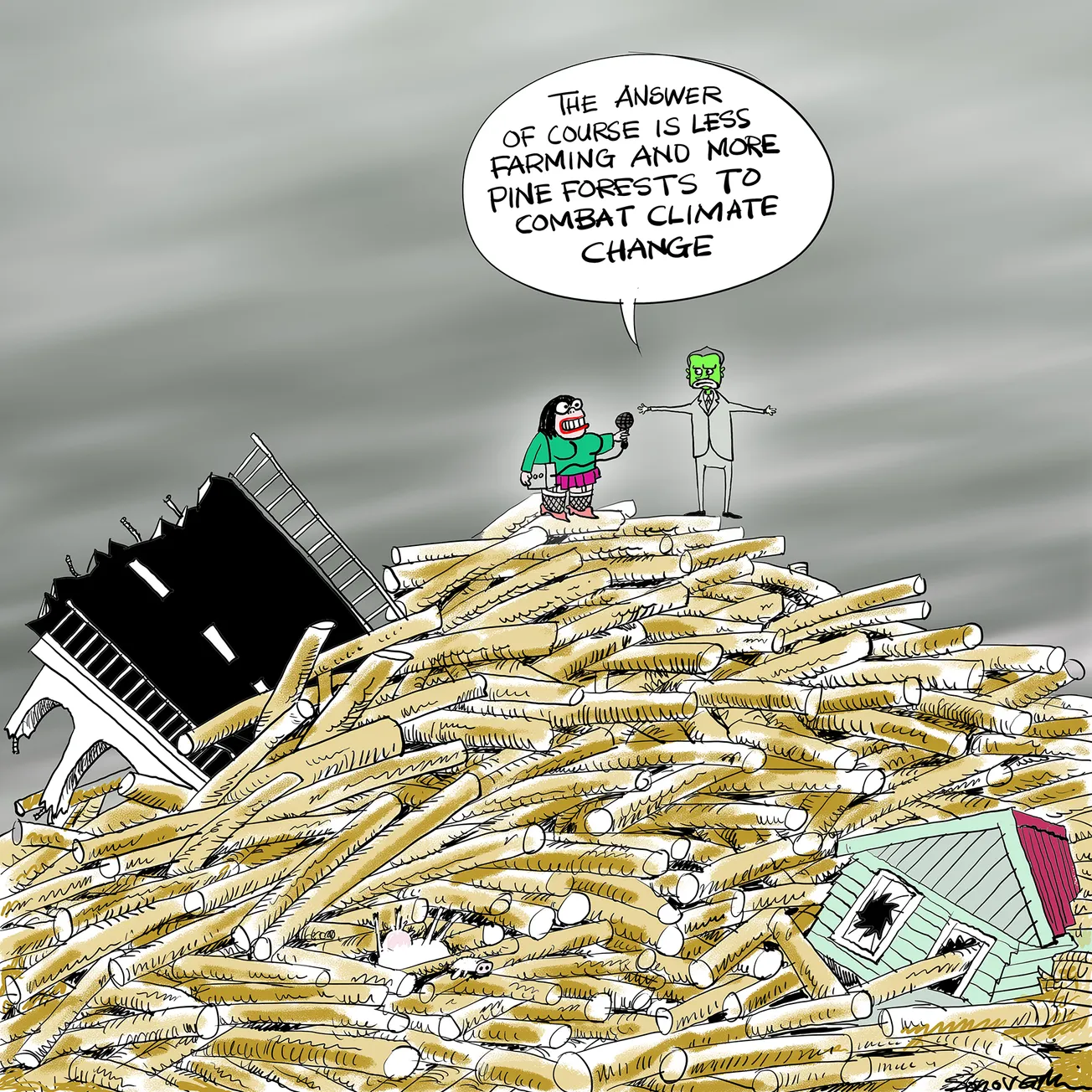In 2019 many farmers marched on the New Zealand Government about their concerns about the government’s incentives for planting pines and farm land being taken advantage of by overseas investors. One farmer’s speech has started re-circulating over the past few days.
I am Lincoln Grant. We farm a 600 ha hill-country farm at Pahiatua. If we blanketed the farm in pines, the government would pay us about $400,000 a year for doing nothing. […]
In our local town the backpackers is filled with young men from the Pacific Islands blanket-planting pine trees on good farmland for the Carbon Forestry Investors. Once planted no work will be done on these farms again, [they] are no-cut pines. The latest property to go that way is just two minutes’ drive from Pahiatua township.
The minister calls them permanent carbon forests. There is nothing permanent about the pine forests or their carbon storage. These have a life time in which they will harbour pests: possums, rats and pigs which will invade neighbouring farms, after which time they will rot and fall down leaving a rotting eyesore for future generations. To throw away farmland in this manner is ludicrous and defies logic. […]
Concerns supported by the government’s own Department of Conservation, which warns, and I quote from the DOC website:
Wilding pines threaten to permanently alter our unique landscapes as conifers overwhelm our native landscapes, they kill our native plants and evict our native animals. They also have a huge impact on the economy They suck valuable water out of catchments, add big costs to farming and impact on our tourism and recreational opportunities.
We have one government department getting rid of pines, another incentivising and advocating their planting. Everything has been done to incentivise forestry at the expense of pastoral farming. Forestry is put on an environmental pedestal, but the truth is they leave a hell of a mess of earthworks and slash after harvest.
All of Nelson Marlborough Area 7 scallop fishery has been closed for three years due to sediment run-off and trash from forestry smothering the seabed. The flounder aren’t fairing much better; similar things are happening in Northland.
We all saw what happened in Tolaga – massive forestry sediment run-off and trash unleashed on Poverty Bay. […]
At the heart of this, is the question: Is the ETS a good environment solution and means of reducing pollution? The ETS doesn’t change behaviour, it just condones it and allows major emitters an out to carry on increasing their pollution. Out national airline Air NZ is a classic example. Using offsetting as a ‘greenwashing’ marketing for guilt-free holidays. The reality is offsetting is offloading, two-fold environmental damage, polluting the atmosphere burning jet fuel (incidentally Air NZ spent $1.27 billion on fuel last year) then dumping unwanted pine trees on farmland as a cure that will eventually be a rotting mess and a fire hazard. A short-sighted lose-lose situation.
50shadesofgreen
Yesterday, Newshub released OIA findings.
Figures obtained by Newshub under the Official Information Act show a rise in recent years of new forestry area, from 695 hectares in 2013 to more than 18,000 hectares last year.
Approved consents by Land Information New Zealand for farmland conversion to forestry have also risen, from just one in 2013 to 31 last year. […]
But every year it’s growing and now planting more trees just brings more concerns about the long-term impacts of the carbon offsetting incentive. […]
Environmental forestry consultant Sean Weaver, the CEO of Ekos, understands farmers’ concerns, but said it’s a complex issue.
“The Hawke’s Bay Regional Council has aspirations to forest about 2000 hectares of erosion-prone farmland, into permanent forestry. So, on the one hand we’ve got people not wanting trees on the land and on the other hand we’ve got to get a lot of trees on the land,” he told Newshub. […]
And not all forestry is for carbon offsetting.
“We’re purchasing around about 1000 hectares a year of what you’d call pastoral land and we are converting that into production forestry,” [Japanese-owned] Pan Pac Forest Products managing director Tony Clifford told Newshub.
Newshub
Discuss it on The BFD.










